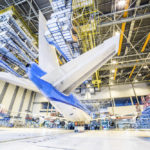Leading drone operators are calling for government action to change the way uncrewed aviation is regulated, and break down the barriers to uncrewed flight that risk the UK missing out on the ‘drone opportunity’.
The comments come in a new White Paper published by the BVLOS Operations Forum, a consortium of advanced drone and technology companies that are pioneering the use of remotely piloted aircraft ‘beyond visual line of sight’ (BVLOS).
Drone operators call for action
‘South of the Clouds: A roadmap to the next generation of uncrewed aviation’, sets out the industry’s vision of how new types of aircraft, like drones, can be integrated into the UK’s busy skies, and what steps the Government needs to take to make it happen.
Organisations in the Forum are already using drones to deliver cancer treatments and vital medical supplies to patients in remote areas; in search and rescue operations by HM Coastguard; and for conducting infrastructure inspections and monitoring in a more sustainable, safer way.
But because government regulations have evolved more slowly than the technologies in this sector, these types of remotely piloted flights are limited to very restricted areas of airspace, making regular commercial services difficult to deliver. ‘South of the Clouds’ presents a collective industry view of how policymakers could address that problem.
Uncrewed aviation
“This White Paper has been co-created by the forum to outline the imperative of uncrewed flight,” said Russell Porter, Chair of the BVLOS Operations Forum and Head of UTM Stakeholder Engagement at air traffic services company NATS.
“The way forward to achieving routine beyond-visual-line-of-sight operations, integrated with other air traffic, will require significant policy change from both the Government and the Civil Aviation Authority.
“While there have been positive developments, not least in the Future Flight Challenge and the recently published Airspace Modernisation Strategy, this fast-growing sector is adamant we need to go further, faster, if we are to make uncrewed aircraft a safe and effective option in the aeronautical toolbox.”
Subscribe to the FINN weekly newsletter

